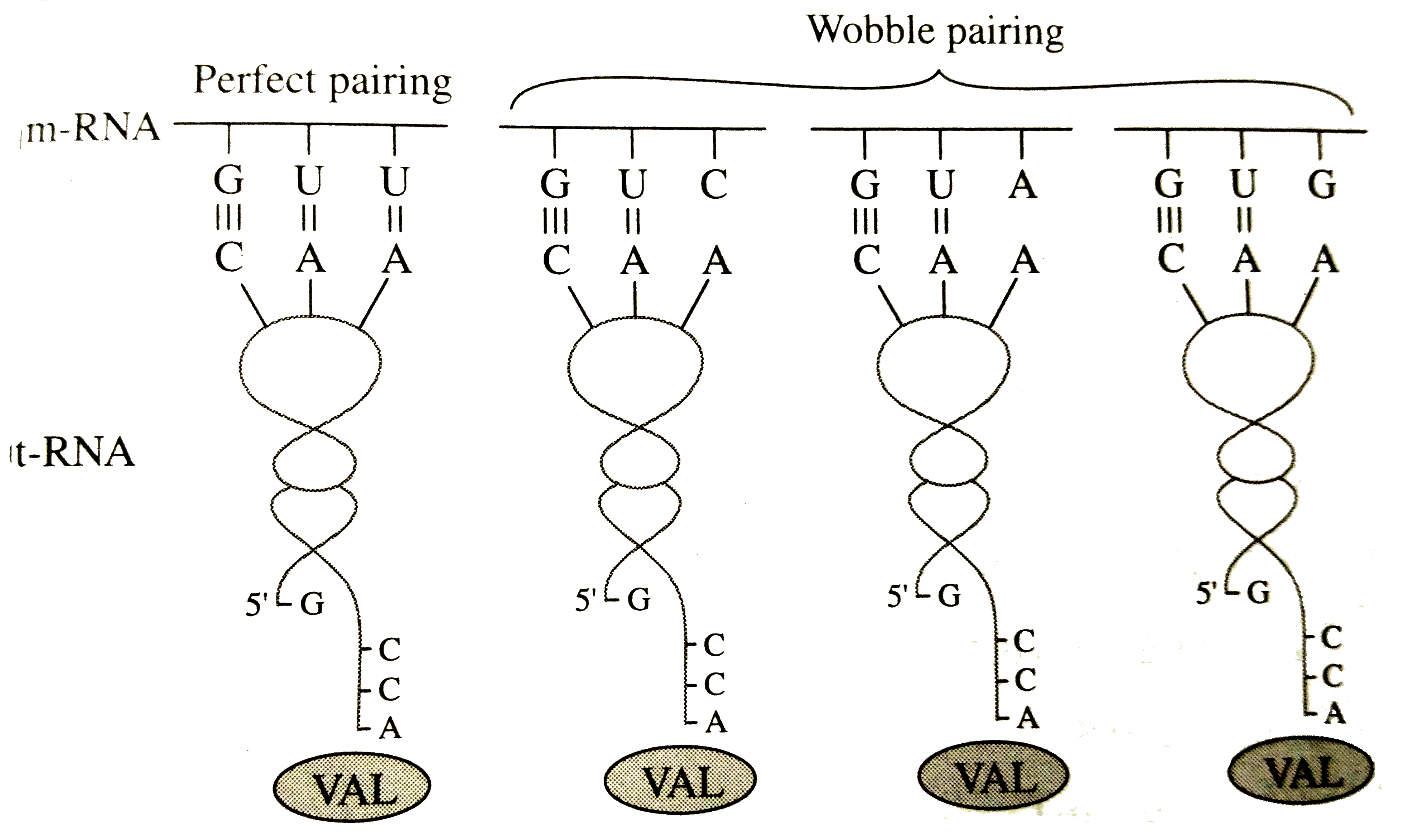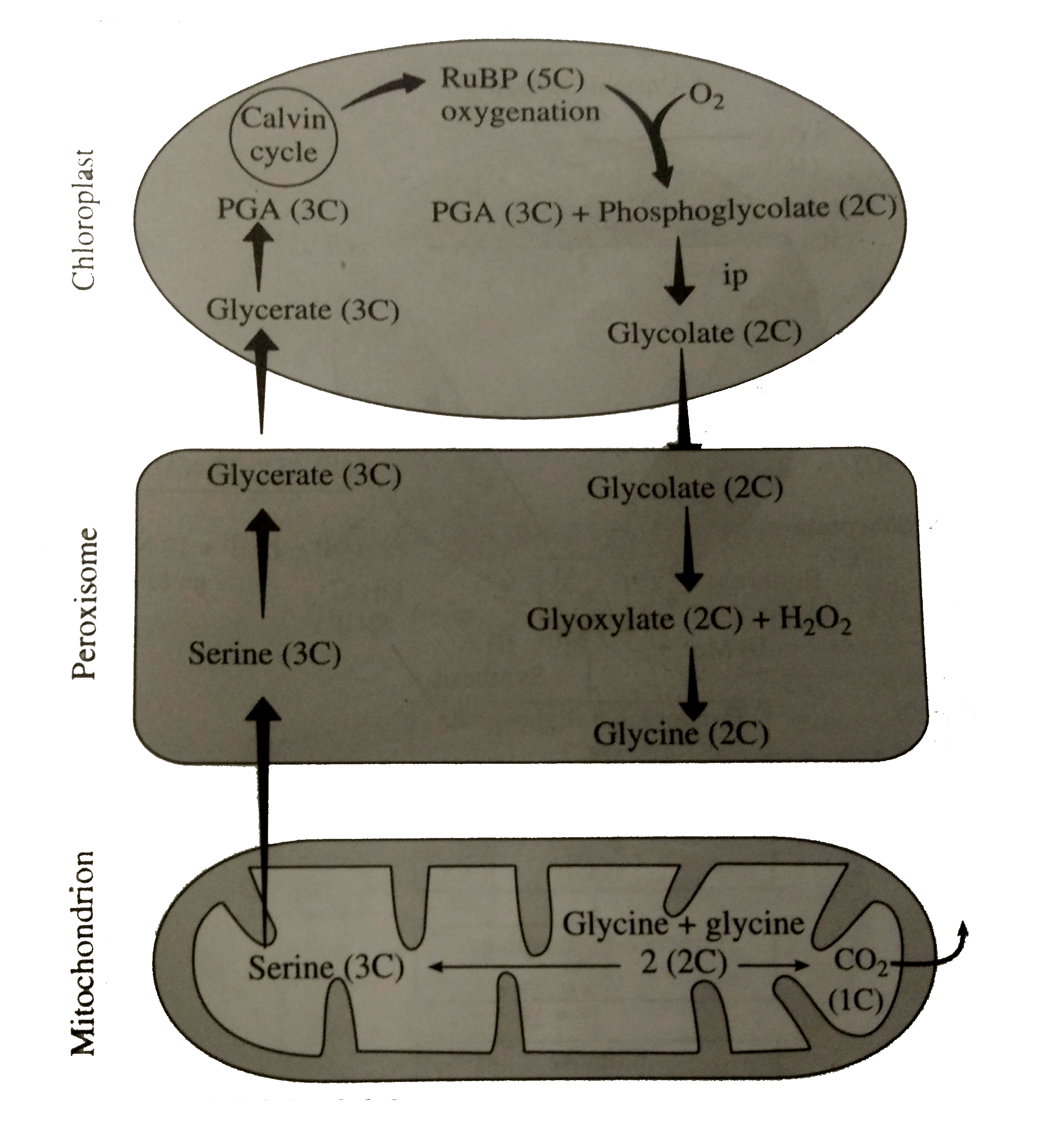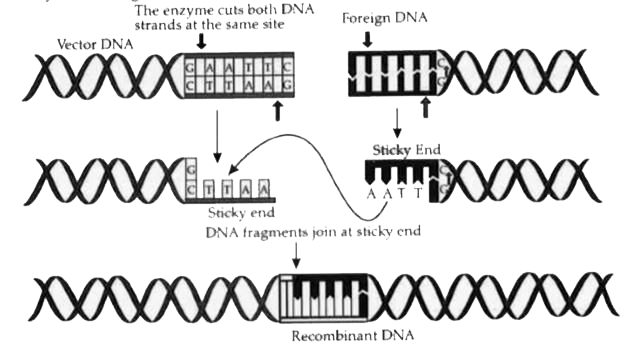InterviewSolution
This section includes InterviewSolutions, each offering curated multiple-choice questions to sharpen your knowledge and support exam preparation. Choose a topic below to get started.
| 17901. |
Question : Differentiate Intersexes from Supersexes. |
Answer» SOLUTION :
|
|
| 17902. |
Question : Different types of population intersection has been observed in a population. Write the type of interaction observed among the following species : {:(,"Species A", "Species B","Type of Interaction"),(1,"Orchid ophrys","Bees","________"),(2,"Cattle","Cattle egret","________"),(3,"Sea anemone","Clown fish","________"),(4,"Ticks","Dogs","________"),(5,"Cuscutta","Hedge plant","________"),(6,"Tiger","Deer","________"):} |
|
Answer» |
|
| 17903. |
Question : Different steps of plant breeding are given. Arrange them in order. a. Selection and testing of superior recombinants b.Collection of variability c. Testing release and commercialization of new cultivars. d. Evaluation and selection of parents. e. Cross hybridizationamong selected parents. |
|
Answer» SOLUTION :a. Collection of variability. B. Evaluation and selection of PARENTS c. Crosshybridisation among selected parents. d. Selection and TESTING of superior recombinants e. Testing release and commercialisation of new CULTIVARS. |
|
| 17904. |
Question : Different species of rhododenron have somatic chromosome numbers of 26, 39, 52,78, 104 and 156. By what means does evolution appear to be taking place in this genus? |
|
Answer» ANEUPLOIDY |
|
| 17905. |
Question : Different species are represented by A, B,C,D,G,P,Q,R and S. Which of the following represents a community? |
| Answer» Answer :B | |
| 17906. |
Question : Different populations of the same organism present in particular geographical area are called: |
|
Answer» Metapopulation |
|
| 17907. |
Question : Different molecular forms of a gene are called |
|
Answer» Traits Adventive embryos produce progenies identical to their PARENTS as there is no GENETIC variations during apomixis |
|
| 17908. |
Question : Different life forms, among organisms in relation to environment were given by : |
| Answer» ANSWER :C | |
| 17909. |
Question : Different factors affecting population density are given below. I,B,D and E represent: |
|
Answer» EMIGRATION, IMMIGRATION, NATALITY, MORTALITY |
|
| 17910. |
Question : Different contraceptive methods are used to control population explosion. Summarise the natural method and barrier method of contraception. |
|
Answer» Solution :(a) Natural METHODS- Periodic Abstinence Withdrawl/Coitus interruptus Lactational amenorrhoea ABSENCE of menstruation (b) Barrier methods Condoms, DIAPHRAGMS, Cervical cap, Vaults |
|
| 17911. |
Question : Different chromosomes number of same human beings ABC and D are given below : 22 pairs of Autosomes 22 pairs of Autosomes + XO 22pairs of Autosomes + 1 Autosome 22pairs of Autosome + XXY. Differentiate between aneuploidy and polyploidy |
| Answer» SOLUTION :Numerical change of CHROMOSOMES at individual level are called aneuploidy OCCURANCE of more than two genomes (exact multiples) of the BASIC chromosomes NUMBER is called polyploidy. | |
| 17912. |
Question : Different contraceptive methods are given below. Pick out the odd one. |
|
Answer» CU T |
|
| 17913. |
Question : Different chromosomes number of same human beings ABC and D are given below : A) 22 pairs of AutosomesB) 22 pairs of Autosomes + XOC) 22pairs of Autosomes + 1 Autosome D) 22pairs of Autosome + XXY. Identify the person who suffers from Klinefelter's syndrome? Write the symptoms. |
| Answer» Solution :D-Ferminised CHARACTER, STERILE MALE, Breast development | |
| 17914. |
Question :Different cells have different sizes. Arrange the following cells in an ascending order of their size. Choose the correct option among the followings (i) Mycoplasma (ii) Ostrich eggs(iii) Human RBC (iv) Bacteria |
|
Answer» i, IV, III & II |
|
| 17915. |
Question : Differeniate dichogamy and herkogamy. |
Answer» Solution :DICHOGAMY and HERKOGAMY are CONTRIVANCES for CROSS pollination. 
|
|
| 17916. |
Question : Distinguish between primary production and secondary production |
Answer» SOLUTION :
|
|
| 17917. |
Question : Difference between tropical rainforest and temperate forest is |
|
Answer» Tropical forest have more of angiosperms WILD temperate forests have more of gymnosperms |
|
| 17918. |
Question : Difference between transverse binary fission and longitudinal binary fission. |
Answer» SOLUTION :
|
|
| 17919. |
Question : Differentiate between the following: a. Binary fision in amoeba and multiple fission in plasmodium. b. Buddingin yeast and budding in Hydra. c. Regeneration in lizard and Planaria |
Answer» SOLUTION :BINARYFISSION in amoeba and multiplefissionin Plasmodium  (b) BUDDING in yeast and budding in Hydra  (c ) Regeneration in LIZARD and PLANARIA 
|
|
| 17920. |
Question : Difference between Chlorophyll'a' and 'b' is regarding this carbon atom of 2^(nd)pyrrole ring |
|
Answer» `3^(rd)` |
|
| 17921. |
Question : Difference between chemical potential of water at any point in a system and that of pure water under standard conditions. |
|
Answer» |
|
| 17922. |
Question : Difference between Atria and Ventricles. |
Answer» SOLUTION : 
|
|
| 17923. |
Question : Differantiate betweencommensalismand symbiosis. |
| Answer» Solution :Commensalismis themutual interactionwhichis benefical for onespecieswhilethe other neithergetsbenefit norharmed .Symbiosisis AHAS oftenbeenappliedto thisrelationshipbut symbiosisproperlyrefersto intimateassociation of TWO or more dissimilar ORGANISMS regardlessof benefits and hence INCLUDES mutualismcommensalismand parasitism. | |
| 17924. |
Question : Dicot stems show scondary growth due to |
|
Answer» PRESENCE of CAMBIUM between xylem and phloem |
|
| 17925. |
Question : Did aquatic life forms get fossilised? If, yes where do we come across such fossils ? |
|
Answer» Solution :YES, aquatic life forms get fossilised in the SEDIMENTS of the water bodies. Infact there are more aquatic than terrestrial fossil organisms. Such fossils of SEA creatures are found in the mountains as opposed to deep sea beds (in sedimentary rocks). Earlier they were found at the bottom of the ocean which in due COURSE of time, these oceanssediments were PUSHED up to form mountains. |
|
| 17926. |
Question : Dicotyledonous seed is similar to monocot seed in presence of |
|
Answer» SCUTELLUM |
|
| 17927. |
Question : Dicots and monocots are two classes under the divison- angiosperms. Which of the following statements are correct about their seeds? i. The scutenllum is cotyledon in dicots. ii. Generally, dicots have non-endospermic seeds. iii. Coleoptile covers the plumule in monocots. iv. The heart-shaped embryo is seen in monocots. |
| Answer» Answer :C | |
| 17928. |
Question : Dicondylic skull is found in :- |
|
Answer» MAMMALS, Birds |
|
| 17929. |
Question : Dicot embryo consists of :radicle and plumuleradicle, plumule, cotyledons and sometimes endosperm.radicle and plumule, cotyledons and tegmenradicle and plumule, cotyledons tegmen ,testa |
|
Answer» RADICLE and PLUMULE |
|
| 17930. |
Question : Dichotomous branching is found in |
|
Answer» fern |
|
| 17931. |
Question : Dicarboxylic acids pathway is seen in |
|
Answer» Leaves of DOLICHOS |
|
| 17932. |
Question : Diatomaceous earth is obtained from |
|
Answer» XANTHOPHYCEAE |
|
| 17933. |
Question : Diatomaceous earth is formed by the group of irganisms popularly known as |
|
Answer» Producer-decomposer protists |
|
| 17934. |
Question : Diaphragms are contraceptive devices used by the females. Choose the correct option from the statements given below. (i) They are introduced into the uterus (ii) They are placed to cover the cervical region (iii) They act as physical barriers for sperm entry (iv) They act as spermicidal agents |
|
Answer» i and ii Spermicidal creams, jellies and foams are usually used along with these barrier to increase the CONTRACEPTIVE efficiency. |
|
| 17935. |
Question : Diaphragm is present only in__________. |
|
Answer» Pisces |
|
| 17936. |
Question : Diaphragm is a dome shaped partition of cardiac muscle. |
|
Answer» |
|
| 17937. |
Question : Diameter and pitch per turn of helix of .A. model of DNA is |
| Answer» Answer :A | |
| 17938. |
Question : Diagrams of some animals are given below. Identify the common characters in them |
|
Answer» PRESENCE of cnidoblasts |
|
| 17939. |
Question : Diakinesis is marked by |
|
Answer» FROMATION of chiasmata |
|
| 17940. |
Question : Diagrammative representation of DNA molecule |
Answer» SOLUTION :
|
|
| 17941. |
Question : Diagrammatically represent the experimental steps in cloning and expressing an human gene (say the gene for growth hormone) into a bacterium like E. coli ? |
Answer» SOLUTION :
|
|
| 17942. |
Question : Diagrammatic represntation of mature embryo sac is given. Identify the cells that are involved in fertilization. |
| Answer» Solution :CENTER CELL ( with two PALAR nuclei ) and egg | |
| 17943. |
Question : Diagrammatic representation to show a perfect pairing and any two wobble pairing. |
|
Answer» Solution :(1) Wobble HYPOTHESIS was proposed by Crick in 1966. (2) According to this hypothesis, in the codon-anticodon PAIRING the THIRD base may not be COMPLEMENTARY. (3) This third base is called a wobble base. (4) The position at which wobble base is present is called wobble position. (5) Due to wobble base pairing, the codon and anticodon do not match perfectly. In spite of this, the required amino acid is brought perfectly during translation.  (6) Wobble base pairing brings about the economy of t-RNA. Here, amino acid valine is coded by GUU, GUC, GUA and GUG. |
|
| 17944. |
Question : Diagrammatic representation of the operation of natural selection two peaks are formed. This condition shows effect of ......(A) Disruptive(B) Directional(C) Stabilizing(D) Distractive |
|
Answer» DISRUPTIVE |
|
| 17945. |
Question : Diagrammatic representation of Photorespiration . |
Answer» SOLUTION :
|
|
| 17946. |
Question : Diagrammatic representation of Miller's experiment is shown. Sequence of substances appearing during the origin of life would have been. |
|
Answer» AMINO ACIDS, AMMONIA,PHOSPHATES, nucleic ACID |
|
| 17947. |
Question : Diagrammatic representation first four stages of primary succession is given below. Correctly identify A, B, C and D: |
|
Answer» A - Phytoplankton, B - REED-swamp stage,C - SUBMERGED PLANT stage, D - Marsh-meadow stage |
|
| 17948. |
Question : Explain the process of recombinant DNA technology. |
Answer» Solution :DIAGRAMMATICALLY represent recombinant D.N.A technology.  Detailed Answer: Each restriction endonuclease recognizes a specific palindromic nucleotide sequences in the DNA. The palindrome in DNA is a SEQUENCE of base pairs that read the same on the two strands in 5...3 direction and in 3. .. 5. direction. e.g. 5..... GAATTC.... 3 3. .... CTTAAG.... 5 Restriction enzymes cut the strand a little away from the centre of the palindrome sites but between the same two bases on the opposite strands. This leaves single stranded overhanging stretches at the ends. They are called sticky ends. They form H-bonds with their complementary cut counterparts. This STICKINESS facilitates action of the ENZYME DNA ligase. 
|
|
| 17949. |
Question : Diagrammatic representation of 'central dogma' is given below :Observe the diagram carefully and redraw it making appropriate corrections.DNA-translation--- mRNA-transcription--- Protein |
| Answer» SOLUTION :`DNAoverset "TRANSCRIPTION" rarr mRNA overset "Tranlation" rarr "PROTEIN"` | |
| 17950. |
Question : Diagram shows a typical agarose gel showing migration of DNA fragments . a. Which of the bands has the largest and smallest DNA fragments ?b. Howcan you make fragments of DNA for electrophoresis?c.Explain separation of DNA fragments using electrophoresis.d.Point out a methodto visualize the separatedDNA fragments after electrophoresis . |
|
Answer» Solution :a. .a. is largest and .d. is smallest . b. USING restriction endonucleases c. DNA fragments are NEGATIVELY charged molecules, They are forced to MOVE towards anode under an electric field . DNA fragments SEPARATE according to their size . d. They are VISUALISED only after staining the DNA with a compound known as ethidium bromide followed by exposure UV light |
|